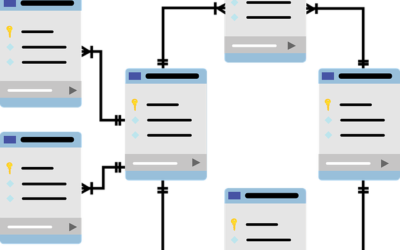A product requirement document defines the product to be built and thoroughly describes it. It outlines the purpose, features, and users of the product. A product requirement document should provide clear direction for the product teams and ensure that all stakeholders share a common understanding. Therefore it is important for it to be well-written. This document will serve as a reference resource for the product manager, and the product development teams throughout the product building process.
Product managers are responsible for writing the product requirement document. It is a communication tool with which you can provide all stakeholders with complete information about the product. You may select suitable team members to contribute to the product requirement document. For example, you may ask a UX designer to create wireframes or ask a marketer to create user stories and personas.
The Market Requirements Document (MRD) is often confused with the Product Requirements Document (PRD), but they are different. You should create a Market Requirement Document before you create the Products Requirements Documents. This is because the Market Requirement Document identifies the needs of the market while the Product Requirements Document defines how the product will meet those needs.
Product requirement documents should be brief, not lengthy. The goal is to provide stakeholders with the overall vision of what you are trying to accomplish and also give them the fine details. The document should convey the information in simple terms, to make it easy for the teams to remember. You may employ visual aids like wireframes to do this.
A product requirement document may include the following:
- Objectives
- Risks
- Design & Wireframes
- User personas & Stories
- Key stakeholders
- Release details
- Future roadmap and iterations
- Analytics
Objectives
This part of the document identifies the product user and explains the market problem the product is trying to solve. It also shows how the product relates to the overall vision of the company. The objectives give the development team the vision and keep them focused on creating a product that will satisfy the customer.
Risks
Risks refer to the possibility that things will not go according to plan. No one can accurately predict the future. You do not know if a product will succeed or not. Neither do you know how well it will succeed.
The product teams may encounter unforeseen problems during the product development process. You cannot predict the future, but you can identify the risks that could affect the product development process. Such risks could range from product budget overrun to a tight deadline. Identifying the risks can help you make plans to address the problems when they come up.
Design & Wireframes
Visual designs and wireframes are valuable visual aids for product requirement documents. They are used to show features from the user’s perspective. They help the product engineers understand the vision and how to implement the product design.
Design wireframes show the engineers and other stakeholders how the user may interact with the product. The product team can easily detect the problems with the product when they visualize it in this manner.
User Personas and Stories
A persona is a fictional character created to represent how a user type might use the product. Personas are vital to the product development process. They help the development team understand the problem the product is trying to solve. When building personas, make good use of audience data. Each persona should have a name and other fictional personal information to make the persona a realistic character. Personas are about creating products with a specific user in mind.
User stories support personas by identifying the persona and their need/goal. The user story should focus on a feature of the product and how it satisfies the persona. The need should be a need identified in the Market Requirement Document (MRD). When the development team keeps the market needs in mind, the team will make a product that meets the consumer’s needs.
Key Stakeholders
The key stakeholders of the product have to be clearly defined. Everyone needs to know who to turn to when issues arise. The stakeholders include the product manager, product owner, product developers, and other managers involved in the production process.
Release Details
Release notes define the product milestones and keep everyone on track. This section of the product requirement document outlines what features will be delivered and the delivery date. The milestones help team members plan their work. Product release notes should contain milestone names, dates, and fixes.
Future Roadmap and Iterations
It is wise to draw up plans for future iterations of the product. Your product should constantly adapt to new technology and changes in consumer needs. You should draw up a product roadmap for future changes to the product. The roadmap should define how user data will guide the changes.
The product design and engineering teams should participate in the planning of the future roadmap. They need to understand how the product may evolve. Participating in the planning will help them lay the foundation for future iterations.
Analytics
The product requirement document should communicate the Key Performance indicators to the stakeholders. Get the product engineers to include feature tracking in the product to provide data on how users interact with the product features.
Create a hypothesis about the impact you expect a feature to have and compare the user data to your hypothesis. Product analytics will help you understand customer behavior and will help you build products that will satisfy the users.










0 Comments